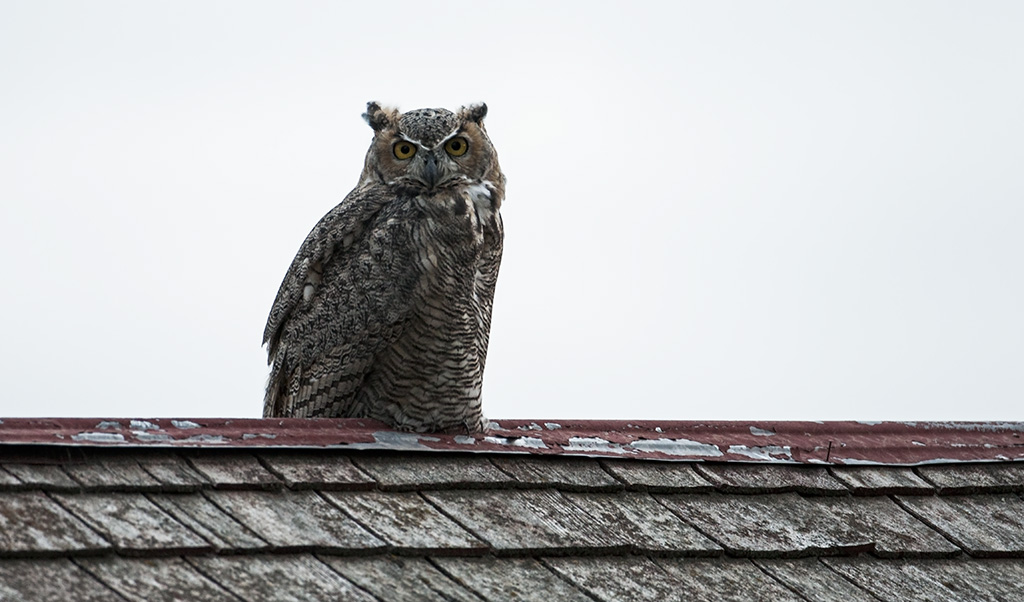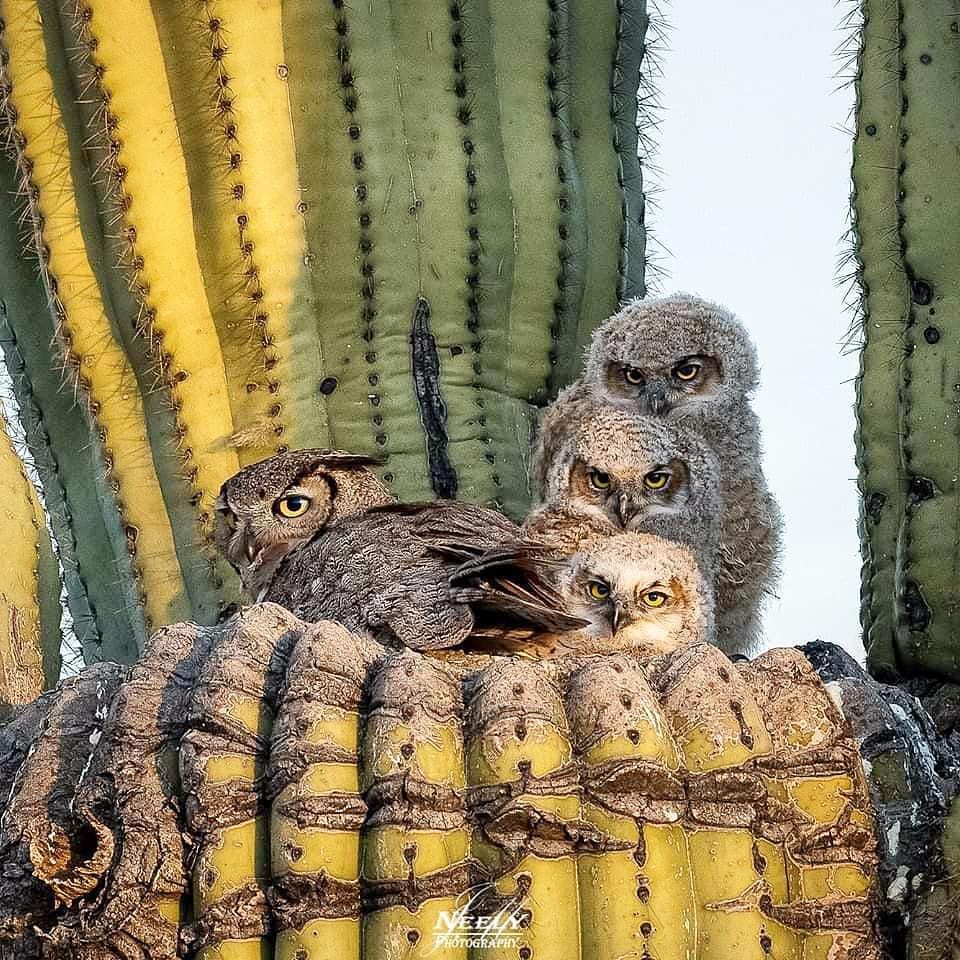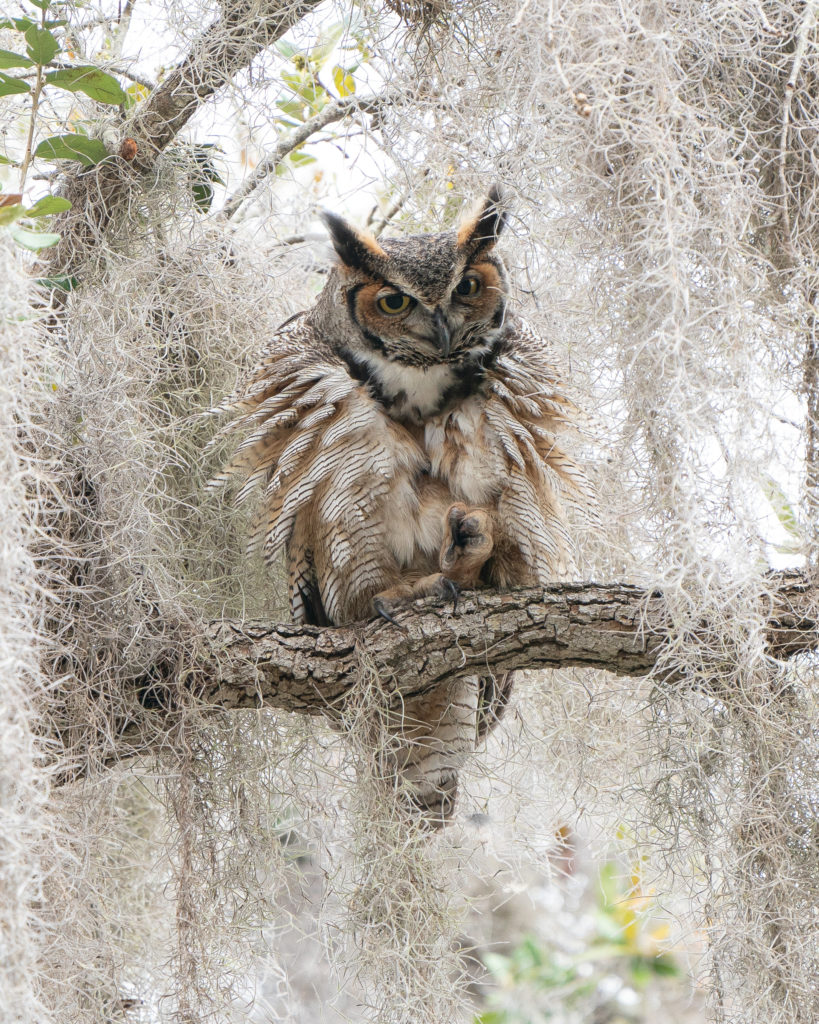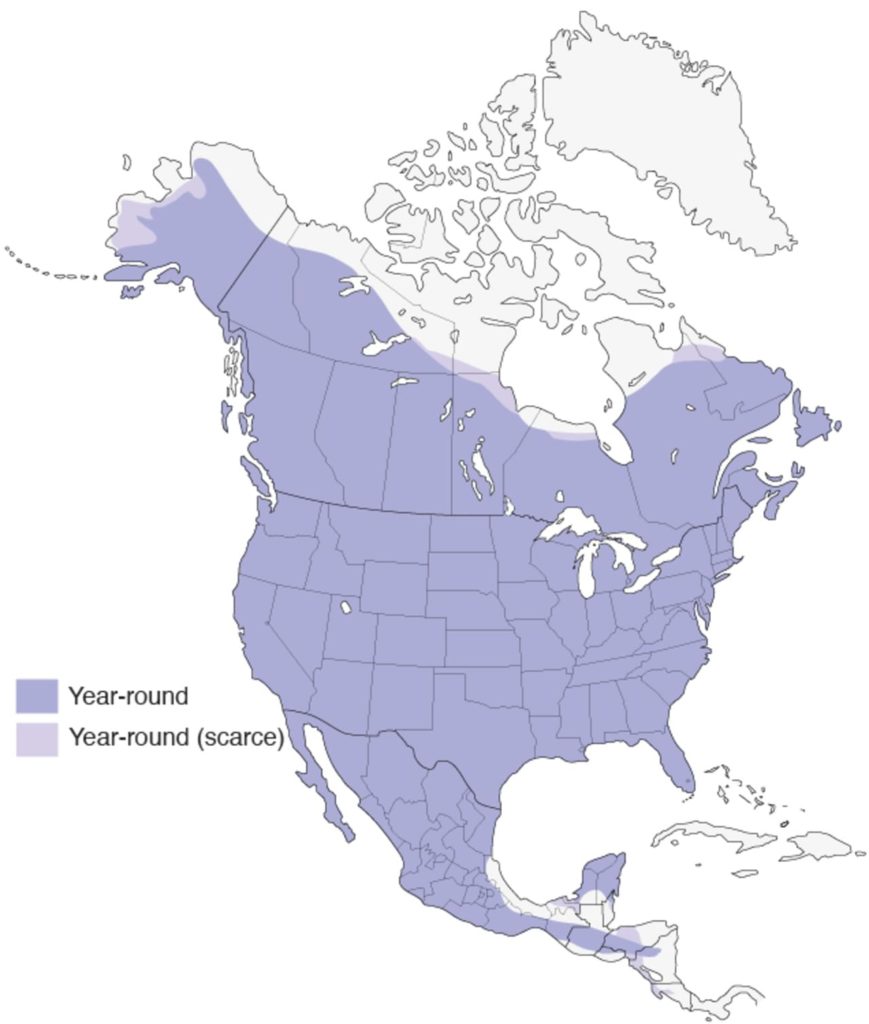by DJ Featherton
Profile of the Week: the Great Horned Owl

It’s sundown and you’re turning into your suburban neighborhood driveway when someone says, “Hey! What’s that big thing on the garage roof?” And then, “Whoa! I think it’s an owl.” Or, again at sunset as you gaze into the distance, “Hey! Is that a giant owl sitting on that fence post?” Or, going through the city, “Hey! Is that a great big bird up on that building?” The answer is yes, it’s the great horned owl. This is the most common owl in North America and it can make home in many and various habitats. Because he is mostly a nighttime hunter, his evening hoots are more frequently heard than the bird is ever seen. So, when suddenly a great horned owl is seen, it’s a spectacle for even the experienced birder.

These large bodied owls stand nearly 25 inches tall and can have a wingspan stretching to almost 5 feet. They are well camouflaged in mottled brownish gray and sport a flash of white at the throat. Their large piercing yellow eyes don’t move back and forth, however, they can turn their head over 180 degrees in either direction. The great horned owl’s ultimate trademark are the two handsome tufts of feathers on his head. This feature makes him distinct and easy to identify.

The great horned owl is a ferocious nocturnal predator. His heavily feathered body gives him a perfectly silent flight and makes for a complete surprise for his nighttime prey. This owl will feed on small rodents, frogs, snakes, scorpions and the like. It will also eat rabbits or other varmints, even feeding on other birds the size of crows and ospreys! In the daylight one can see a number of crows frantically harassing a perched great horned owl, but at nighttime, the crows get eaten! It’s easy to see why this great nighttime marauder is disliked and feared by his prey as he swiftly snaps the spine of his quarry. It can take 28 pounds of pressure to pry loose the clenched talons of a great horned owl! These guys are tough!



The great horned owl’s breeding range covers most of Alaska, Canada, all the U.S., and most of Mexico. Although this terrific predator is common in so many areas, there is some decline being seen in our Midwest region. Loss of nesting habitat is the major culprit. Can you imagine the benefit owls give to farms? One big help that can aid the decline of horned owls in any area is putting out nesting boxes. These are easy to make if you’re handy with tools, or you can simply buy from a number of sources. Make sure you put the box up before mating time which is late February to early June. The owl box should be on a hardwood tree that is at least 12 inches in diameter and the box should be 15 to 35 feet off the ground for best results. If more than one box is placed, the second should be a mile or more away for territorial rights. The owls say thanks!




Birding, and knowing about birds is fun. A few weeks ago, a neighbor was riding his motorcycle in the neighborhood when he suddenly came across “… a huge owl! It was giant and just stayed in the road with his wings out looking at me! I think he was eating something.” I smiled and was interested in his experience. I said, “Yep, that was a Great Horned Owl.”
Is THIS the sound you hear in your neighborhood? It’s a GREAT HORNED OWL!
